A Roast of the Shroom Boom and Psychedelic Mania
The resurgence of psychedelic culture has meant one thing for wellness brands: exploit, exploit, exploit.
some birthday weekend fun on lsd in 2021 with bestie Spence ◡̈
If you know me, you know that for the better part of the last decade, I’ve enjoyed regular experiences with various psychedelics; primarily psilocybin, LSD, and MDMA. They taught me poignant lessons about perspective, self-awareness, and compassion, and although I don’t believe they’re for everyone, I remain an advocate for the accessibility of these medicines in the right context.
nothing hits quite like multi-colored lights on lsd ੈ✩‧₊˚
I haven’t touched any psychedelics for a year. After a night in 2023 that scared the crap out of me, I put MDMA to bed, and after a few medium doses of psilocybin and lsd, also in 2023, that left me feeling sick to my stomach and paranoid, I laid those to rest as well, at least for now.
I strongly believe in only experiencing a psychedelic if you are feeling called to do so. Perhaps I’ll feel a calling in the future, but for now, I’m fine with my dead-sober life, except for my daily dose of Kanna.
But this post isn’t about me, so let’s dive into the beauty and wellness industry’s exploitation of psychedelic culture.
An important note I must make, is that when I refer to exploitation or capitalization by beauty / wellness brands, it’s not to say they aren’t also providing immense value in regards to access and education to much-needed medicines. Both can be true!
For example, SuperMush, which I will deep dive, uses quintessential peace and love psychedelia branding of the 1960s and 70s to attract customers, despite not having any psychedelics in their products. However, they are deeply passionate about psychedelic education, and their founder is heavily involved in beneficial psychedelic reform.
Before I proceed with the brands, a word on how pharmaceutical companies are taking advantage of the shroom boom and resurgence of psychedelics.
First off, the fact that pharma is getting involved in creating synthetic, or lab made, versions of traditional psychedelics in a “if you can’t beat ‘em, join ‘em” sort of way, is a conflicted voyage to say the least.
These are not the medicines our healthcare system is used to working with. Psychedelics do not fit squarely into the 1:1 matrix of symptom to treatment. The US healthcare system’s method of treatment is to take X pill and it might fix Y issue… but it also might not and will probably create a slew of other issues you didn’t want or expect.
Psychedelics are not “medicine” in the way Western healthcare understands medicine. They reach much further and deeper into the core of our being. They can rewire our brains, cure addiction, lift what was otherwise treatment-resistant depression, provide relief for sufferers of PTSD, and eliminate our egos. And in some unfortunate cases, they can destroy your nervous system, induce psychosis, or create a catatonic state of complete identity destruction.
Despite the risks, pharmaceutical companies are eager to standardize and bottle psychedelics. The possible pros of pharma’s sudden interest in psychedelic medicine? More standardization, safety protocols, and funding for clinical studies and trials.
In order to be savvy consumers, we need to question the authenticity of everything (including the wellness brands I’m about to share).
The US healthcare system relies on a sick population. Since when has pharma cared about curing people and not just keeping them in the system in perpetuity?
Who’s funding these studies and their results?
How will they control pricing and accessibility to these medicines?
Will they bastardize psychedelic medicine beyond recognition?
Psychedelics are far more complex than your average Lexapro (and potentially more effective), and we’re only just staring to realize their full potential. It’s crucial we maintain a reverence for the inherently mystical, unexplainable nature of these medicines, and not synthesize and adulterate them to a point where they are unrecognizable and the very thing that makes them special is lost.
Now let’s stoke the fire and put a few brands in the hot seat, beginning with:
Psychedelic Water
Few brands are as brazen as those who include “psychedelic” IN THE NAME OF THE BRAND when they have absolutely zero ties to psychedelics. I shouldn’t be surprised that they jumped on the brat summer bandwagon with their new brat cans.
Let’s break down the branding first. Buckle up because I will not be gentle.
The multi-colored swirls, iridescent cans, and gradient bags of powdered packets for mixing into beverages is lazy at best.
They are clearly catering to GenZ with the bright colors, on-the-nose visual odes to psychedelia, and festival footage complete with tickets to various DJ sets. A quick scroll through their IG shows attractive young people at parties and festivals merrily drinking their beverage, appearing to have the “best time ever!!!”
They ground the brand in a thinly veiled affiliation with the so-called NA generation, aka GenZ, who are allegedly forgoing alcohol for Psychedelic Water. While I love the idea that young people aren’t drinking as heavily as their predecessors, I fear that they are replacing alcohol with other party drugs in pill form, and don’t get me started on vapes.
So while these beautiful festival-going youths may be posing with their psychedelia branded cans of water, I can hardly say they are making healthier lifestyle choices based on their Instagram-worthy photos. I’m picturing them posing with a can of Psychedelic Water just to get “the shot,” then swiftly canning the can (heh), and grabbing a White Claw instead. These kids LOVE their hard seltzers.
We know that Psychedelic Water contains absolutely zero psychedelics, so what is in this beverage?
Their Good Mood Mix packets contain 250mg of Kava. Kava is a central nervous system depressant (much like alcohol) that slows down neurotransmission between the brain and the body. Traditionally used by Pacific Islander communities for its hypnotic, sedative, and relaxing effects, Kava was crushed, chewed, ground and soaked in cold water to produce a drink for ceremonies and cultural practices.
Luckily, their canned beverages contain green tea extract with about as much caffeine as a cup of coffee, so if you’re lucky, you won’t be sound asleep during the sick DJ set.
Can it be used as an alcohol alternative? Certainly! I’m all for using medicinal plants and fungi as anti-vices.
However, according to their FAQ page, it may not deliver much more than hydration when it comes to the experience.
image from https://psychedelicwater.com/pages/frequently-asked-questions
They start with some BIG claims there! Happiness! Euphoria! All of your worries will fade and give way to *BLISS*.
…
I have a feeling most people may be the “friend” they mention.
Can somebody tell me wtf they mean by “sobriety is psychedelic”…?
What does Psychedelic Water taste like? Apparently it has notes of sunshine on a rainy day, butterfly kisses, and the taste (?!) of a sick beat drop, brah.
Psychedelic Water is exhibit A of a brand capitalizing on the psychedelia craze, and their branding and marketing attracts GenZ like moths to a flame. Don’t be surprised if after reading this and merely thinking the words “Psychedelic Water” in your head, this cool-kid beverage in all its swirly, prismatic glory appears all over your feed and fyp.
It begs the question: is there any harm in these marketing tactics?
While I find Psychedelic Water to be annoyingly on-the-nose, exploitative of the psychedelic renaissance, and perhaps misleading, is it harmful? In my opinion, not really.
If it means more young people are holding kava waters that will make them shoot rainbows out their ass instead of alcoholic beverages in their hand - that’s a win in my book, even if they still have a vape in the other.
Upgrade to paid if you’d like to continue on this roast with me. I promise it’ll be juicy.
Let’s dissect our next victim. I’m kidding. This isn’t meant to be a true roast, but I honestly don’t believe enough people think enough about the borderline predatory marketing tactics brands use in order to lure customers using language and imagery that are completely unrelated to any actual value the products themselves bring.
With that said, let’s take a peak under Neon Hippie’s hood. Again, we see the ode to 1960s and 70s psychedelia culture in the name, the logo and type font. The branding is somewhat basic, but they dress it up with neon colors and fancy product names like “Cosmic Concentrate Face Serum” and “Optimistic Eyes Serum”.
I’m feeling the cosmic vibes.
If you haven’t guessed by the totally rad product names, Neon Hippie is a skincare brand that uses plant and mushroom based ingredients, emphasis on the shrooms.
I have to applaud their ingredient list. While I’m not sure what “3D hyaluronic acid” is, peptides, resveratrol, squalane and vitamin C are all respectable staples for a formula. Their proprietary 7 shroom complex found in their Night Bright cream contains Reishi, Matsutake, Tremella, Shiitake, Chaga, Cordyceps, and Black Truffle, that will apparently give you that “magic glow.”
It actually sounds kind of nice.
The retail partnership with Neiman Marcus seems like a mismatch, unless Neiman has taken a turn towards catering to the GenZ raver crowd who also happen to be obsessed with skincare. That in and of itself seems juxtaposed, as going to bed at 5am with a full face of glitter and face paint is generally advised against in the skincare community.
Is Neon Hippie riding the coattails of the psychedelic renaissance and the shroom boom? You betcha.
Being a brand founder, there’s a question I ask myself regularly: will this brand stand the test of time? In other words, will it age well, regardless of trends coming and going.
In the case of Neon Hippie, Psychedelic Water, and so many more that are cashing in on a very specific cultural moment in time, I believe the answer is no, they will not age well. However, that might not matter. Most of these brands are built for the sole purpose of being acquired after their first 5-10 years, at which point they can undergo major pivots and rebrands in an attempt to stay relevant beyond the initial band wagon they boarded.
But people, don’t forget to embrace your unique qualities and strengths, and let them shine brightly for all to see ✩₊˚.⋆☾⋆⁺₊✧
Which leads me to my final assessment.
SuperMush
To me, SuperMush is one of the most literal interpretations of a brand leveraging the design aesthetics of psychedelic culture. It seems made for social media, with its fun-loving colorful mushrooms and peace signs dancing around the packaging. It screams Venice Beach.
While I find it to be the MOST on-the-nose of all the psychedelic-inspired brands on the market, SuperMush can claim slightly more street cred than the others. It’s co-founder, Ali Schaper, is a formidable advocate and ally in the psychedelic movement, spearheading a not for profit organization, Microdosing Collective, which aims to protect the right to microdose, providing education for consumers while leading psychedelic reform.
On Ali’s podcast, Into The Multiverse, she interviews guests ranging from shamans to celebrities on their psychedelic experiences, hitting on topics of addiction and mental health.
One could say that although SuperMush itself has little to do with psychedelics, their co-founder is walking the talk in her efforts to spread awareness and education, particularly as it pertains to microdosing.
Let’s jump back to their branding and marketing tactics that have led to a viral presence on TikTok and Instagram.
SuperMush pulls every lever when it comes to appealing to GenZ. Bright, colorful, playful packaging covered in mushrooms and rainbows? Check. Activations at all of the coolest music festivals complete with DJ collabs? Check. A Venice beach super posse? Check. Super dope merch and apparel? Check.
Some DJs I’ve never heard of repping SuperMush as the new brand ambassadors.
Cool people being cool. I also think some or all of these people are DJs but I can’t be sure.
As a hardened millennial, SuperMush is a tough sell for me. It’s gimmicky branding, collaborations, and reliance on festival culture to propel it to a state of virality is unrelatable to me personally.
GenZ however are gobbling it up, at least that’s how it seems based on social media stats alone. Without peaking behind the curtain to see if the wizard is truly a wizard or merely a man in a mushroom sweatsuit, it’s hard to know how successful the brand is in terms of profit. Safe to say SuperMush will likely be acquired for a handsome sum before its time on this trend wagon runs out.
To end on a high note, I will give them an A+ for ingredients, though I can’t speak to the potency of the dosages (you might need to eat half the bag of the sex gummies to feel the heat, if you know what I mean).
*Side note* If I’m not mistaken, it appears they may have changed their packaging from “Daily Sex Gummies” to “Daily Passion Gummies,” I assume due to Shopify payments taking issue with the word “sex” putting it in the category of high risk products. Big banks no likey. Many sexual wellness and CBD brands run into this as well. Hell, I even ran into it with our blue lotus pre rolls. Those banks are such prudes. Lucky for SuperMush, this was an easy photoshop change and likely did not require a redo of the actual packaging components.
This photo from their IG reads “sex gummies”:
While the product photo on their website reads “passion gummies”:
While I do see this as a blatant cash grab on the heels of psychedelic mania, luring GenZ by hoards with the lowest hanging fruit (sorry, but it’s true), my hat goes off to the founders for being smart enough to be one of the first brands do take this route.
At least by appearances, it’s paying off massively, and I have the utmost respect for Ali for her hustle in co-founding a successful CPG brand whilst hosting a popular Spotify podcast, and leading a not for profit to defend and protect the people’s right to microdose. Girl Power.
Overall, SuperMush is a brand that doubled down on psychedelia culture so much so that they actually do it well. They may not be for me, and that’s okay. Not every brand has to be for every body. They have a very clear target demographic of young people who want to be connected to what they feel is a cultural movement.
So what if they ride bicycles in gaggles down Venice Boulevard, roll up in a lookalike vintage VW van to festivals, wear handkerchiefs on their heads and peace sign sunglasses and lay around in cuddle puddles? They aren’t hurting anybody!
We all need a bit of whimsy in our life, after all.
Thanks for reading.
With peace and love ☮️🫶🏻
Have more brands that could use a good roast? DM them to me or drop them in the Mall Talk group chat! It’s a safe space ♡︎





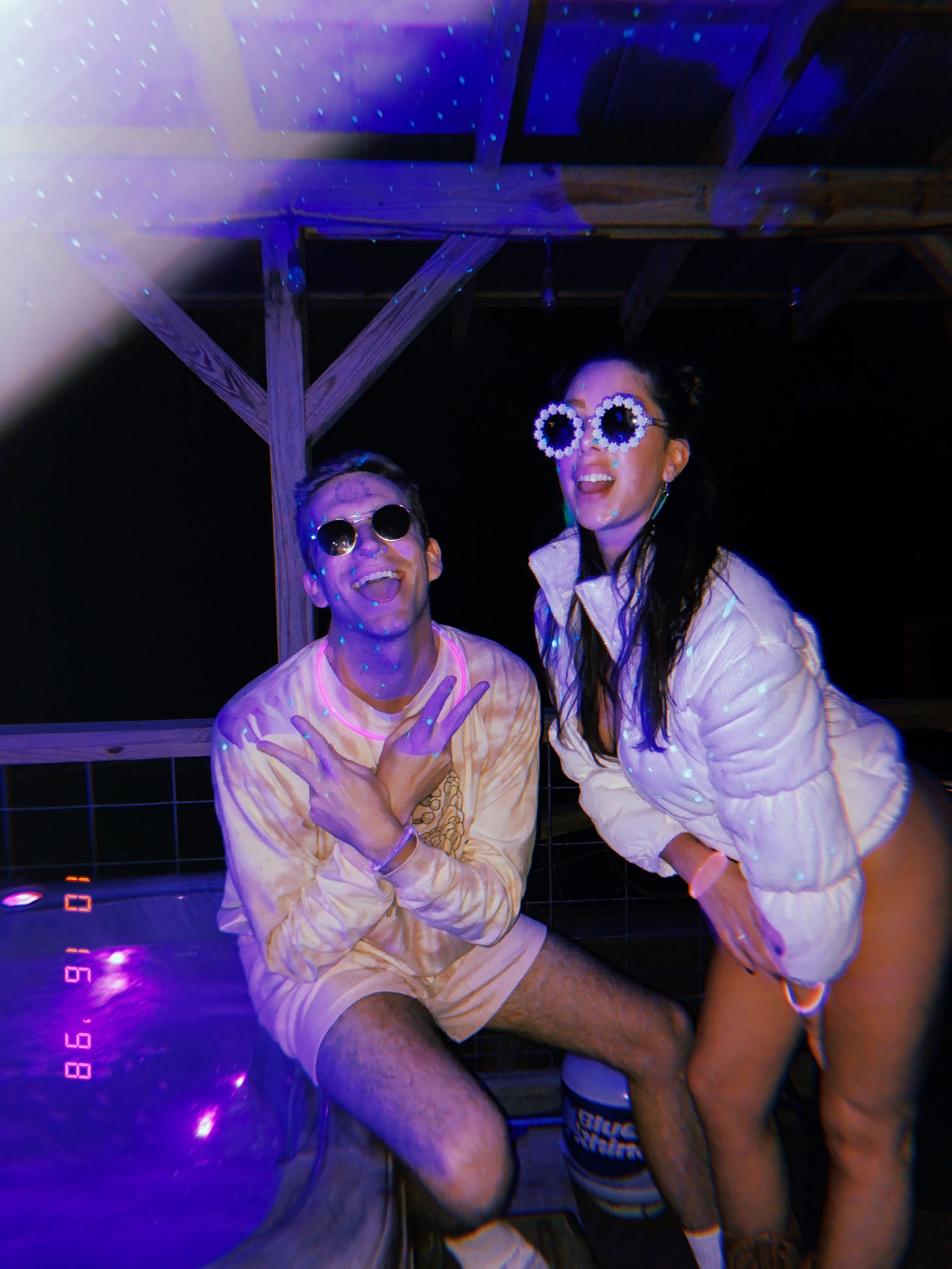
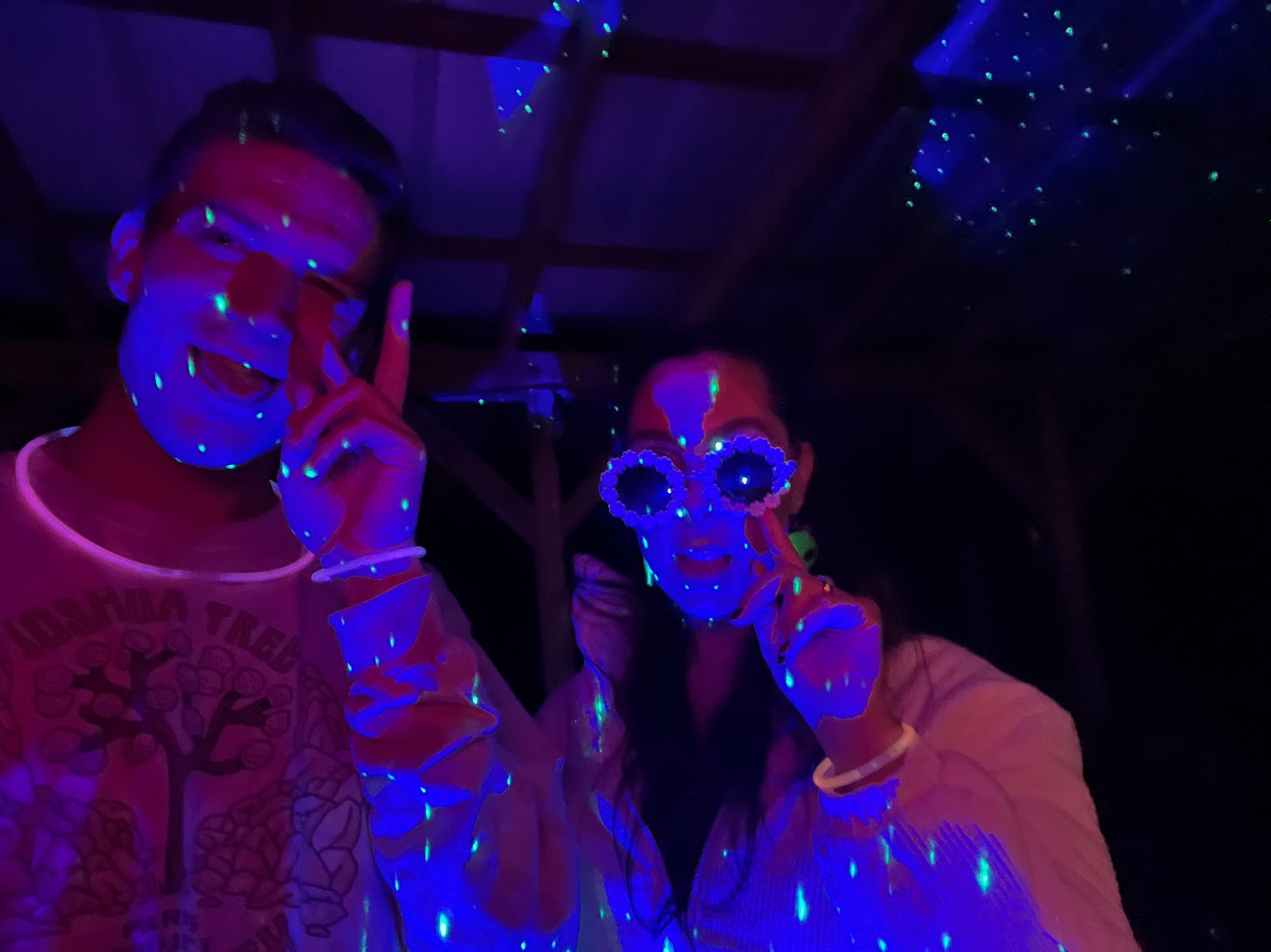
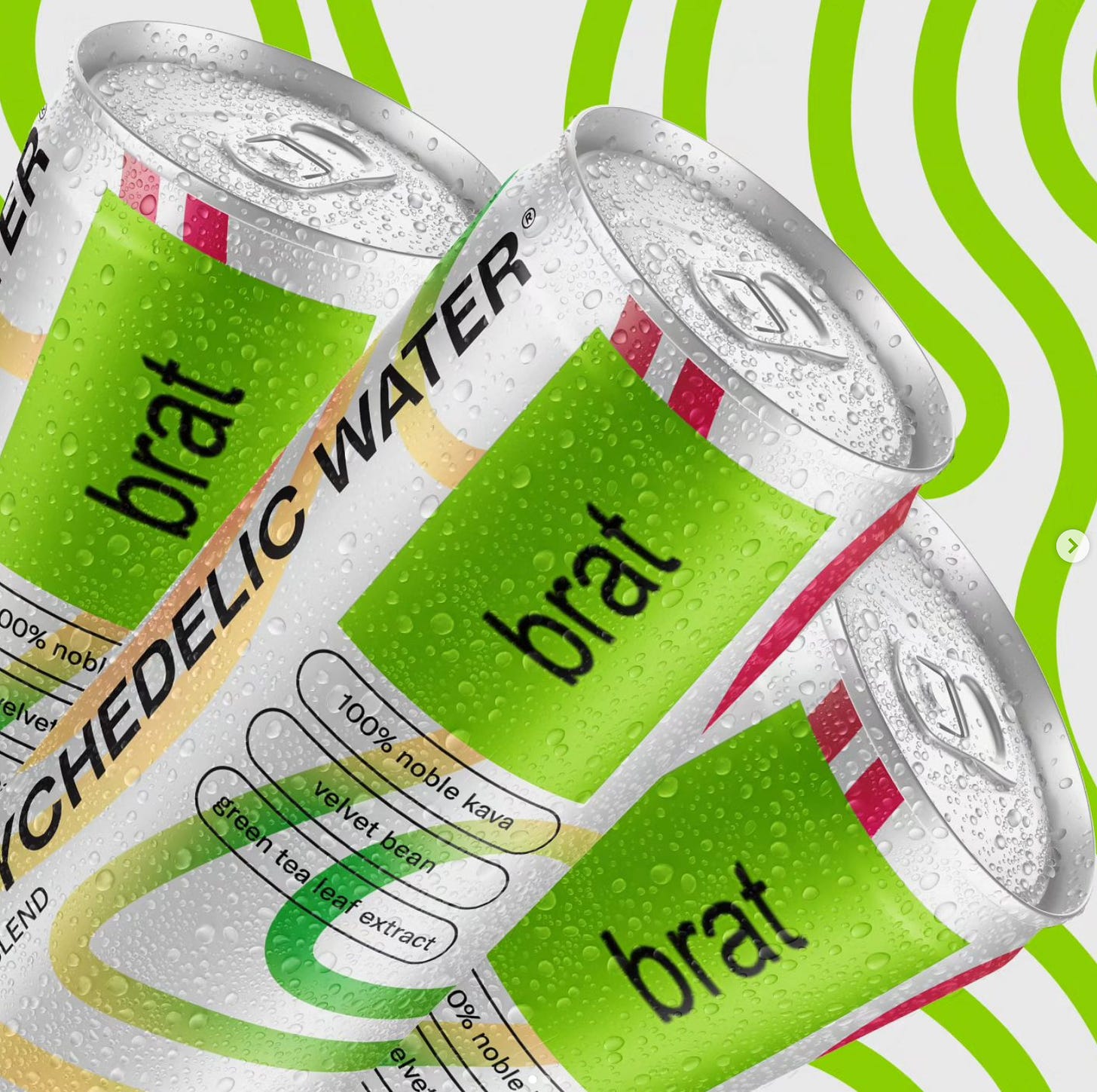
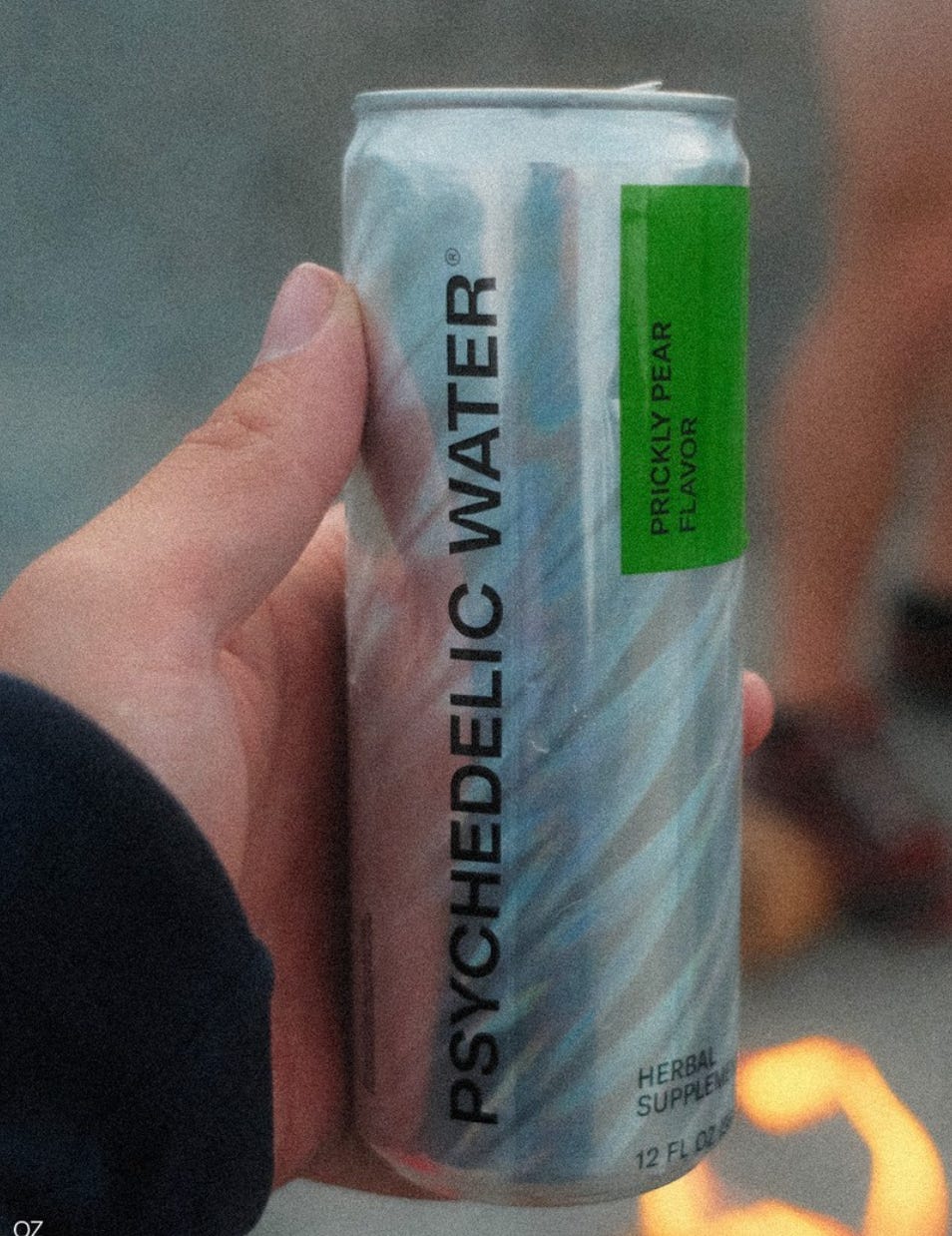
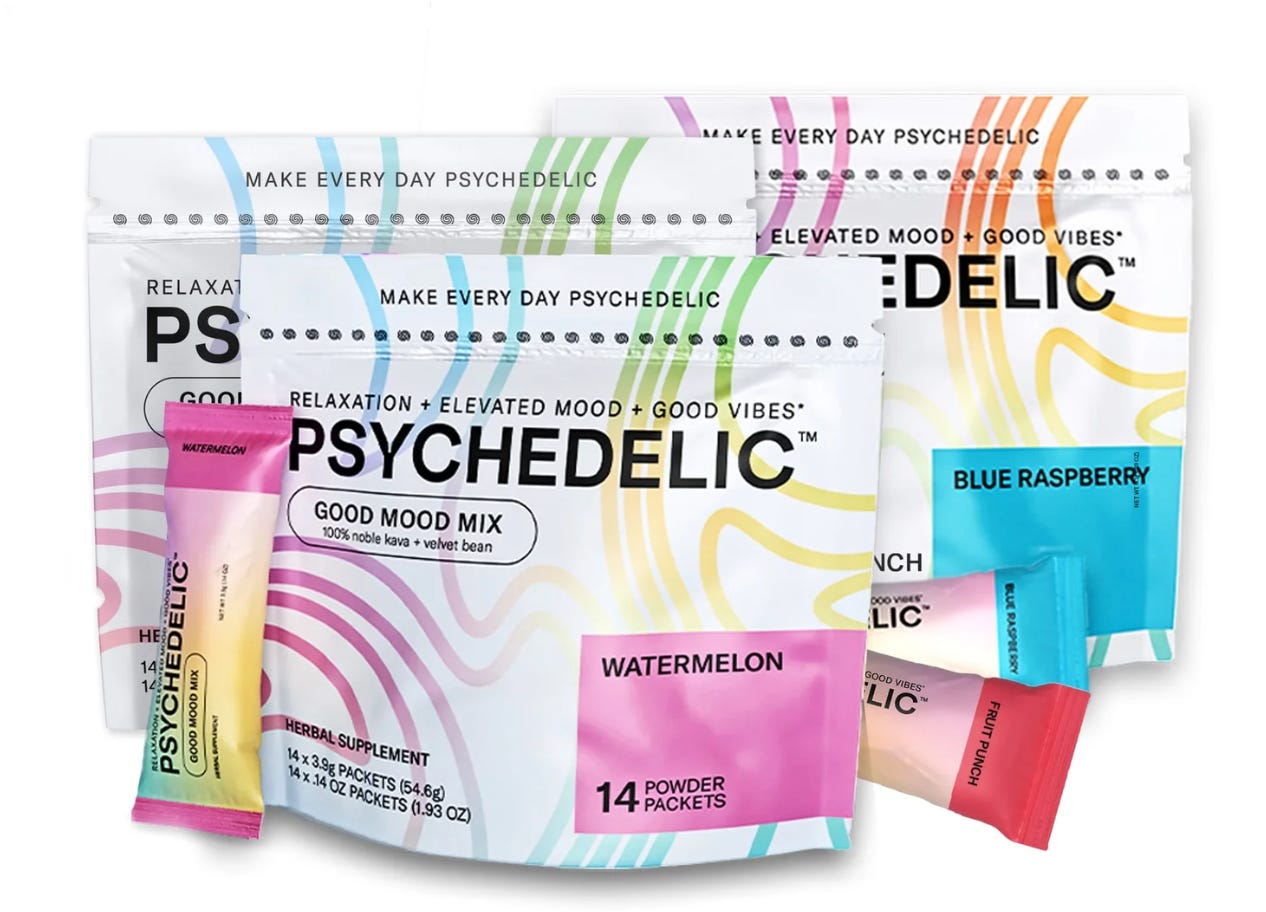
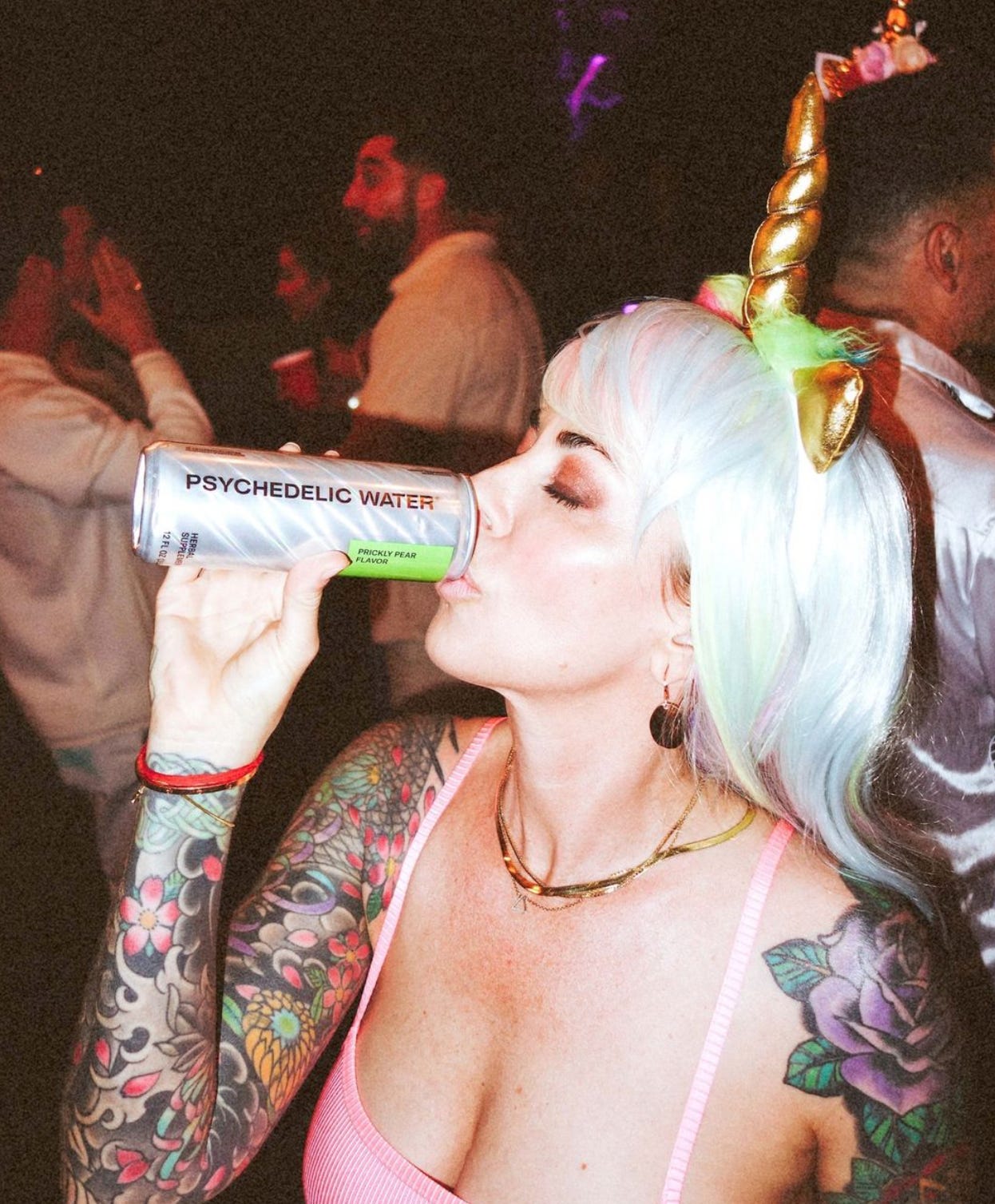
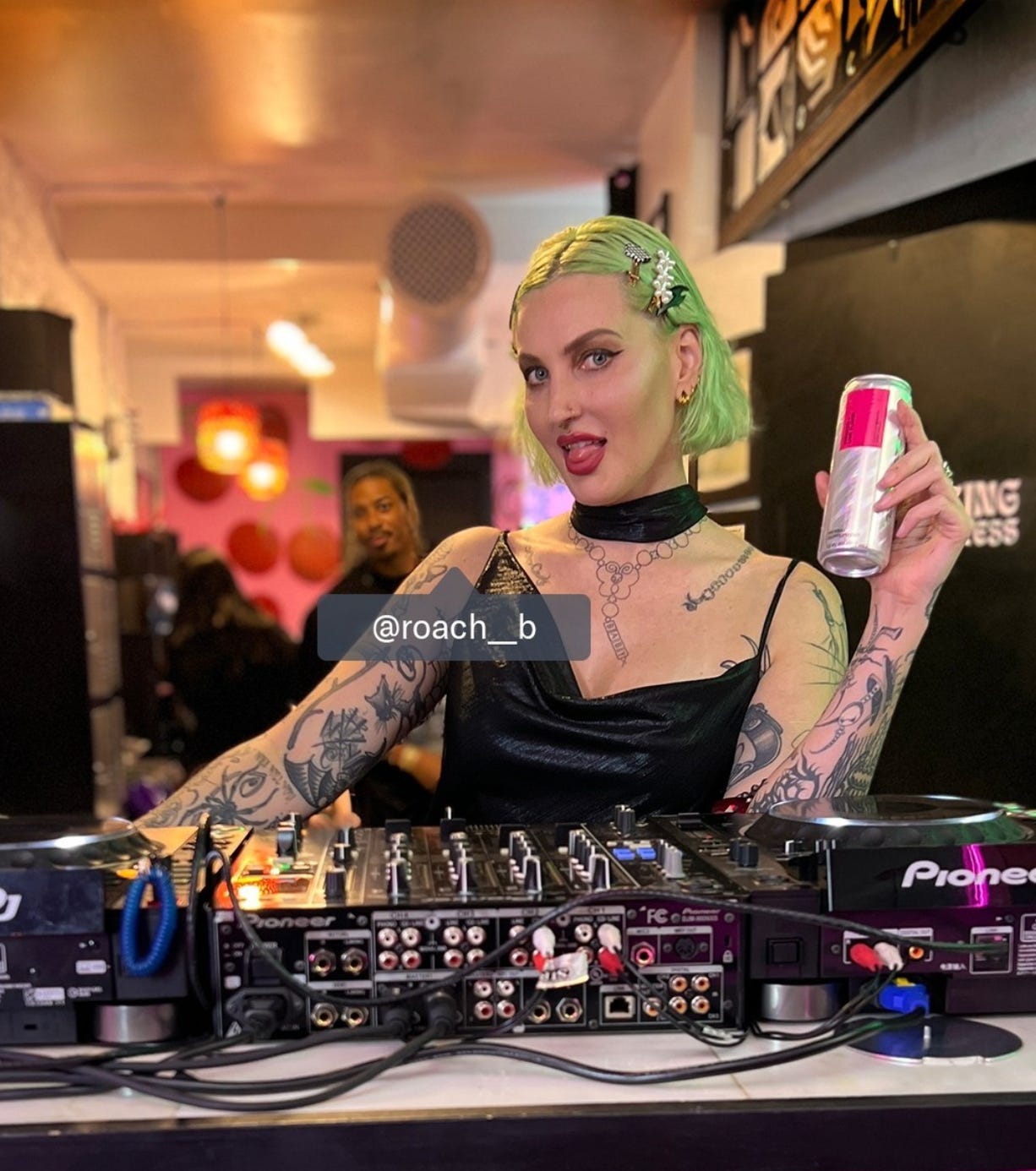

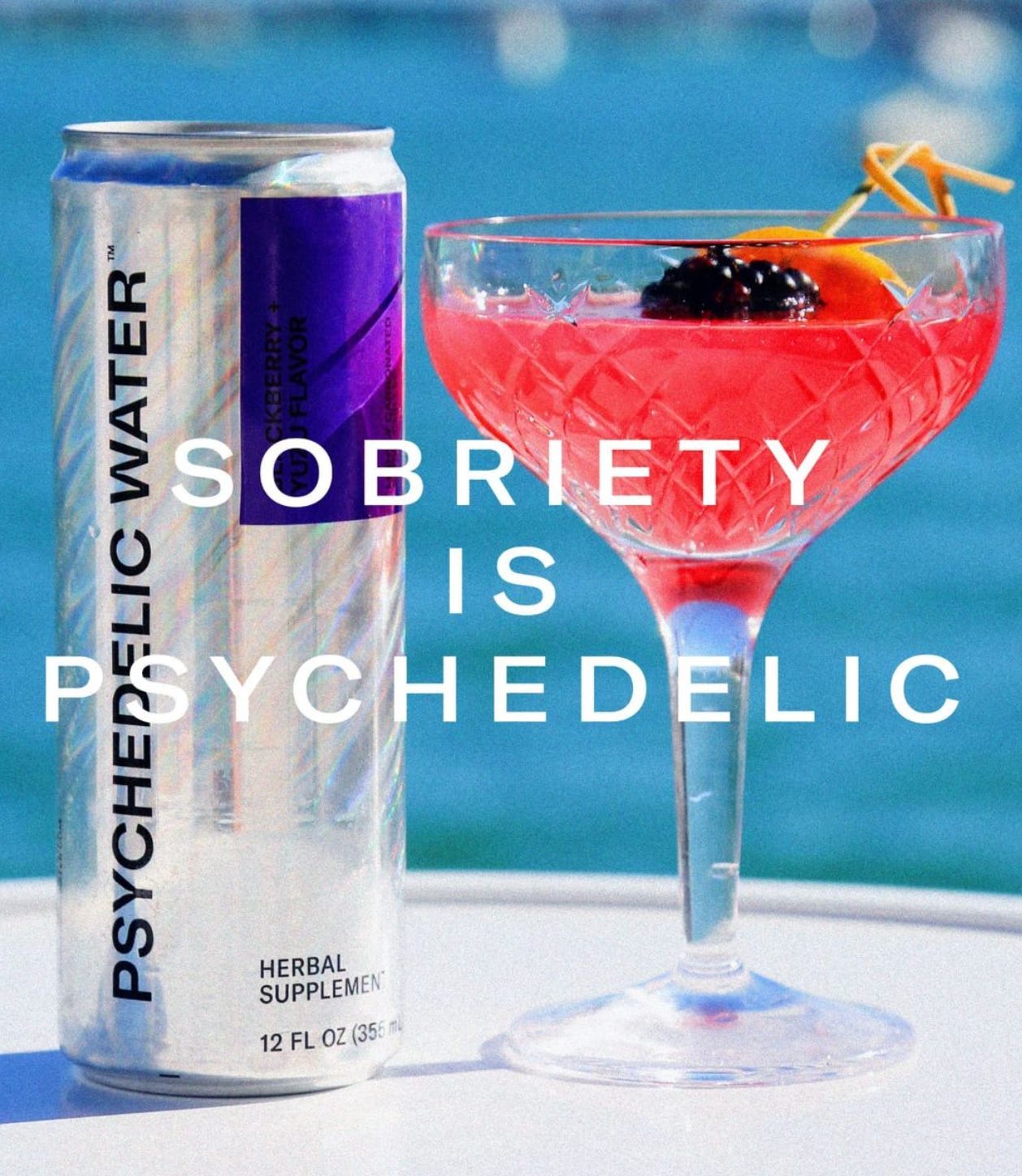

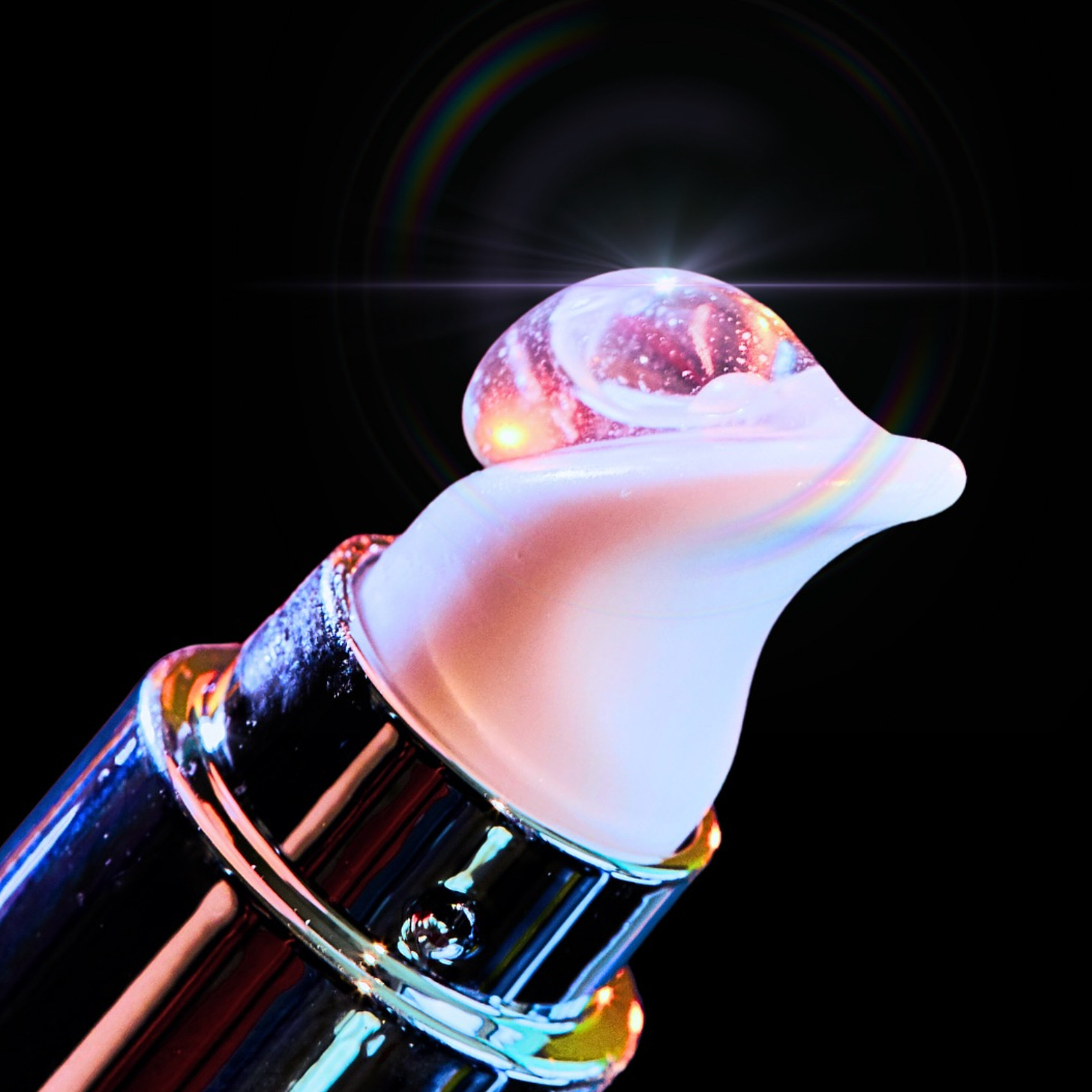
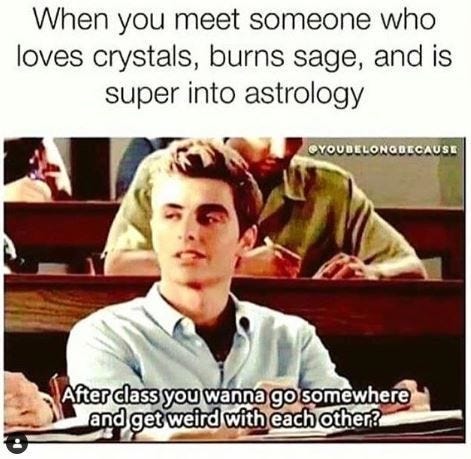
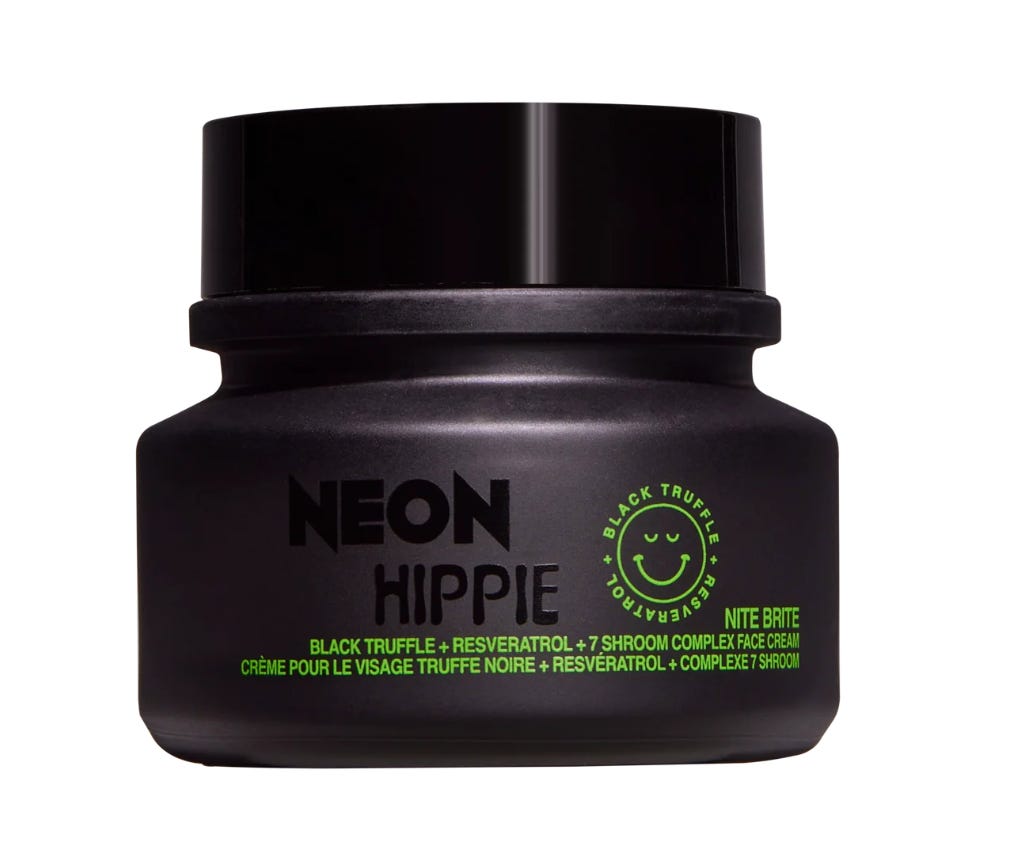
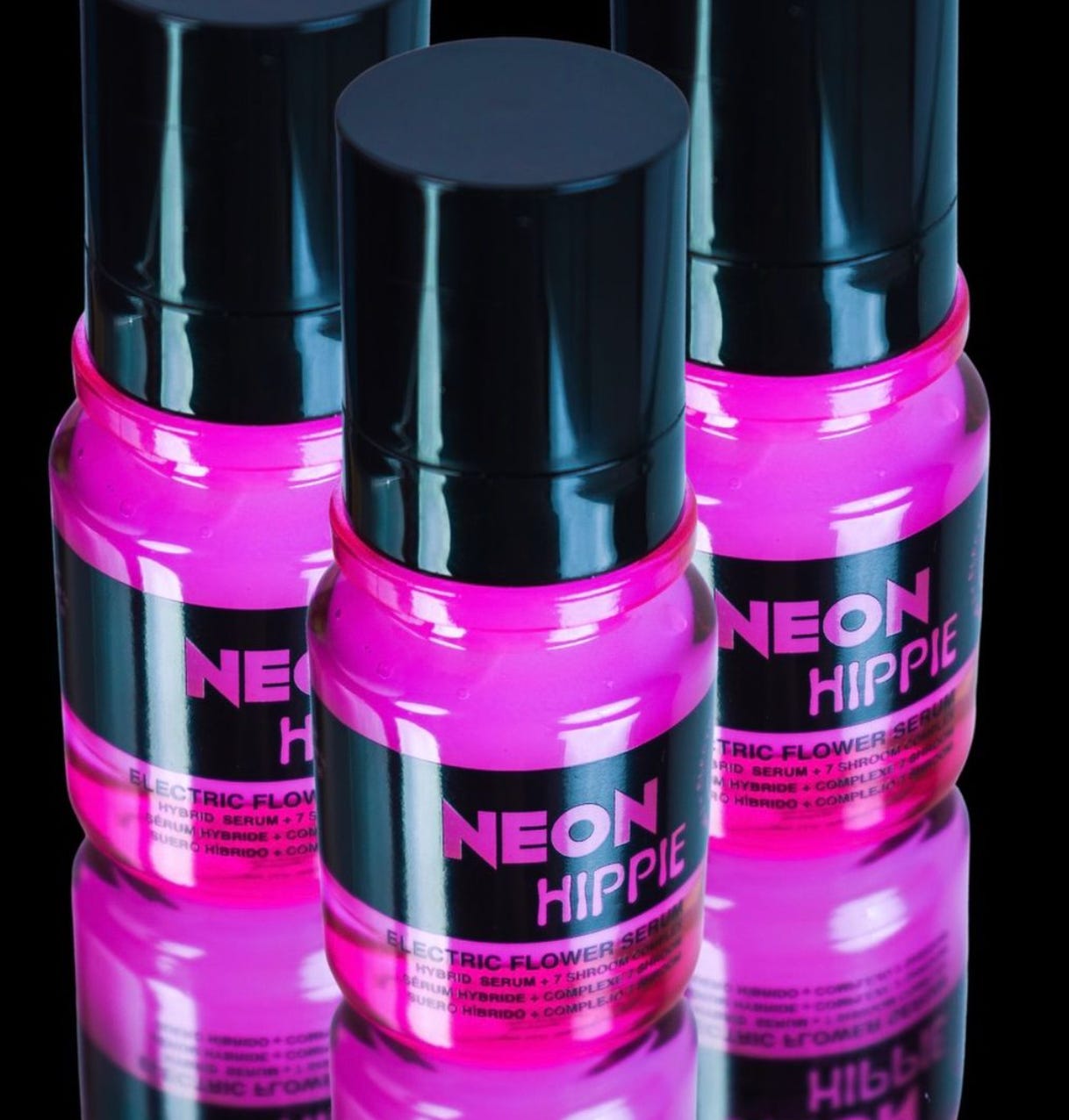
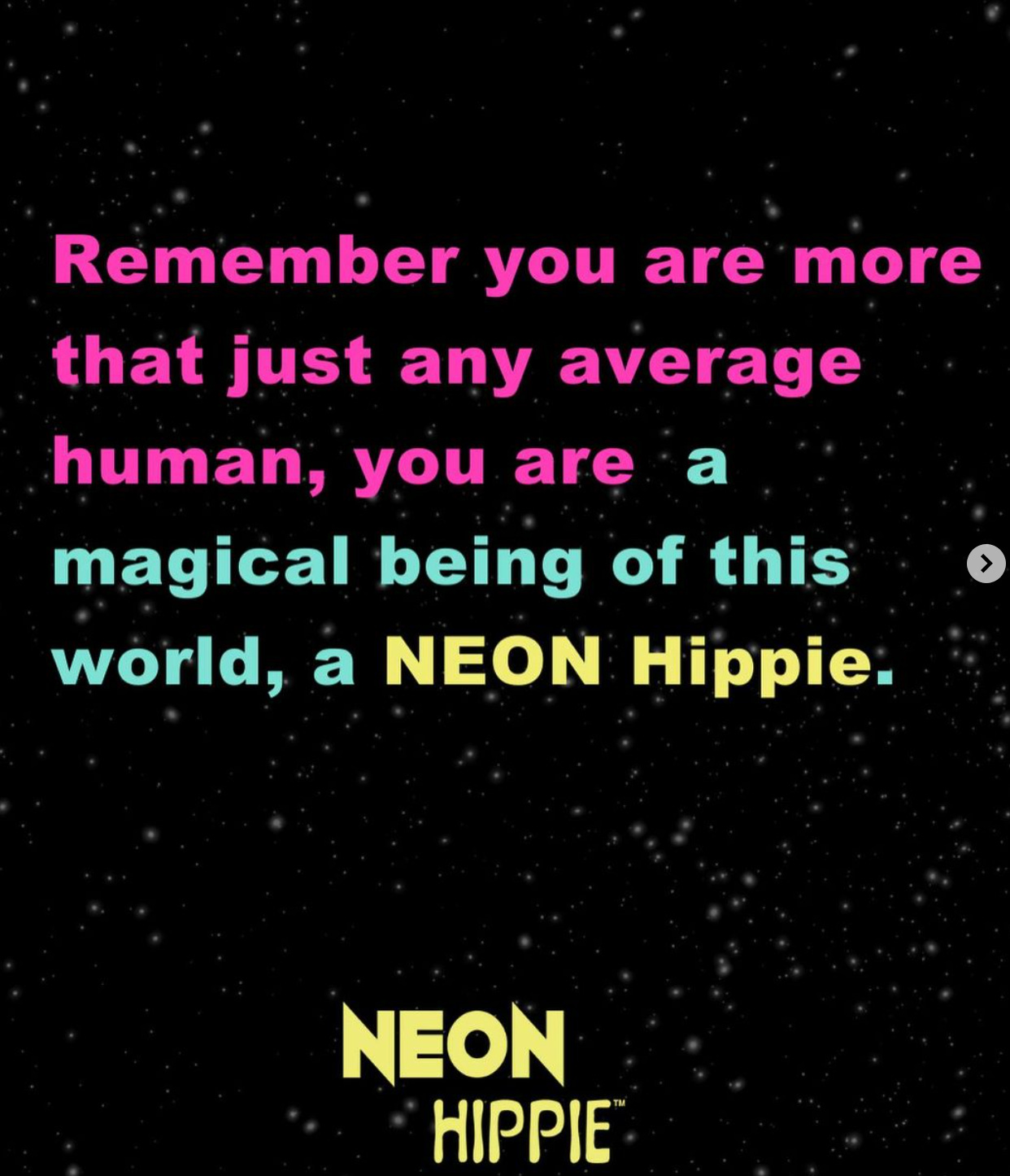
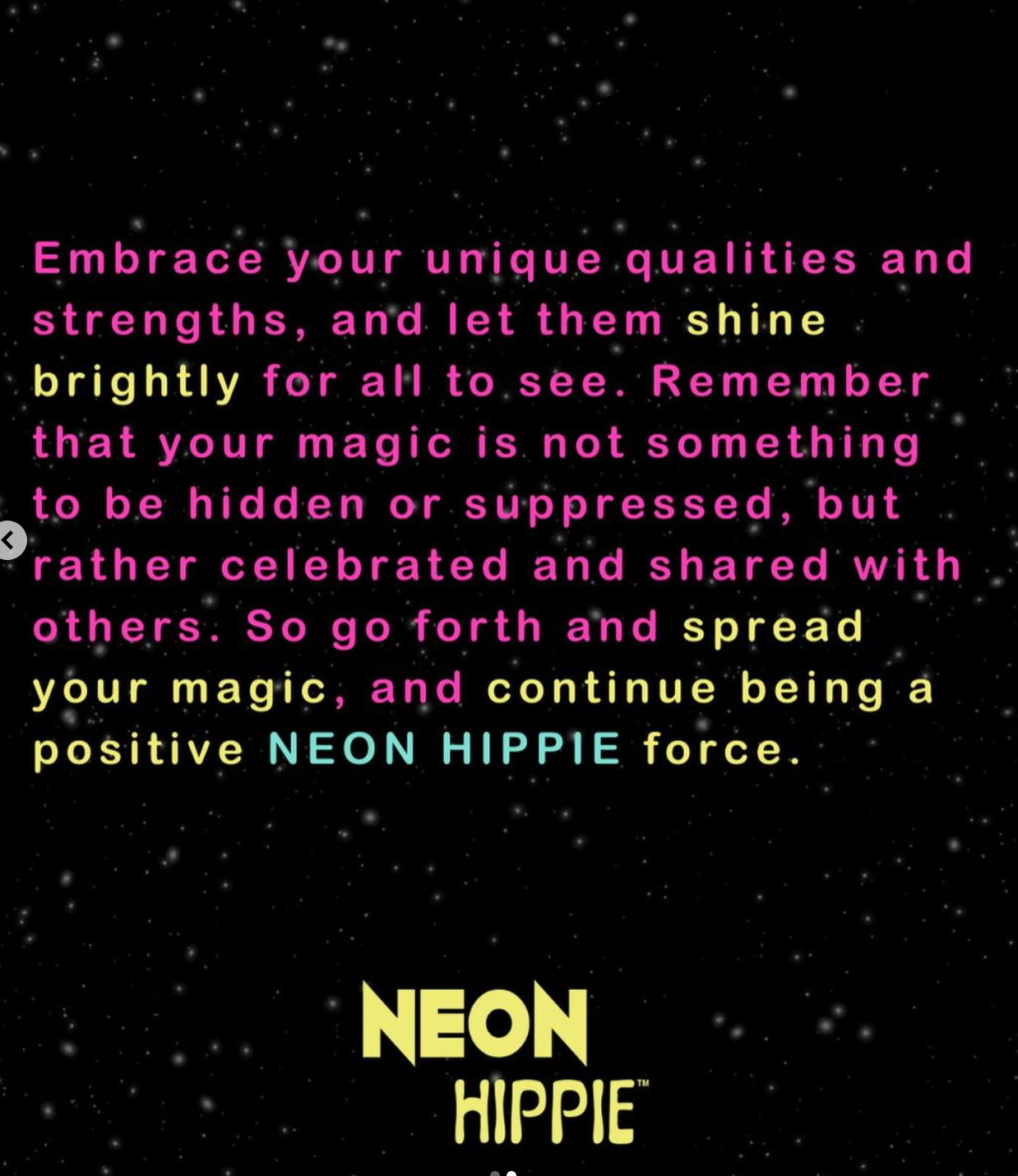
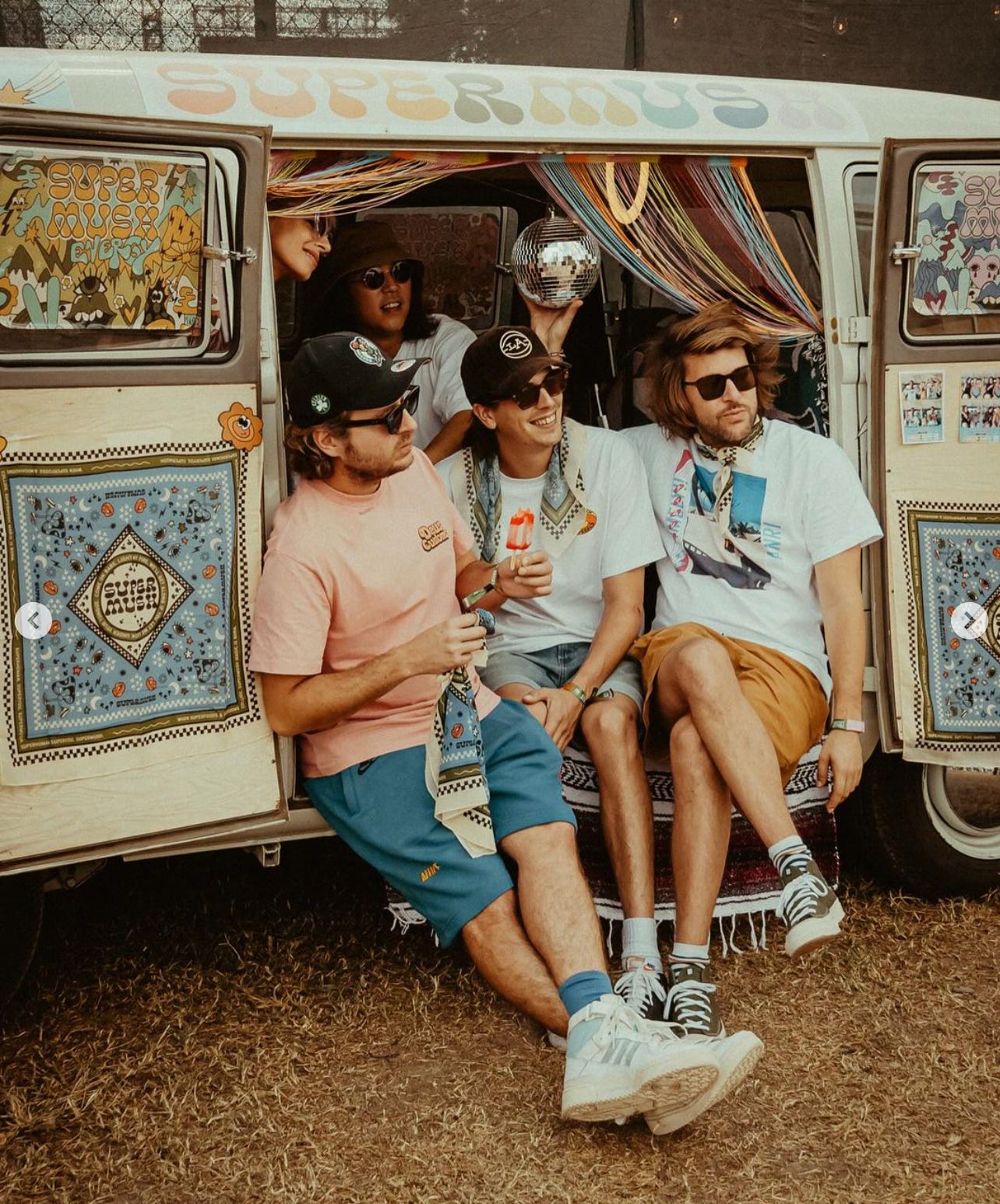
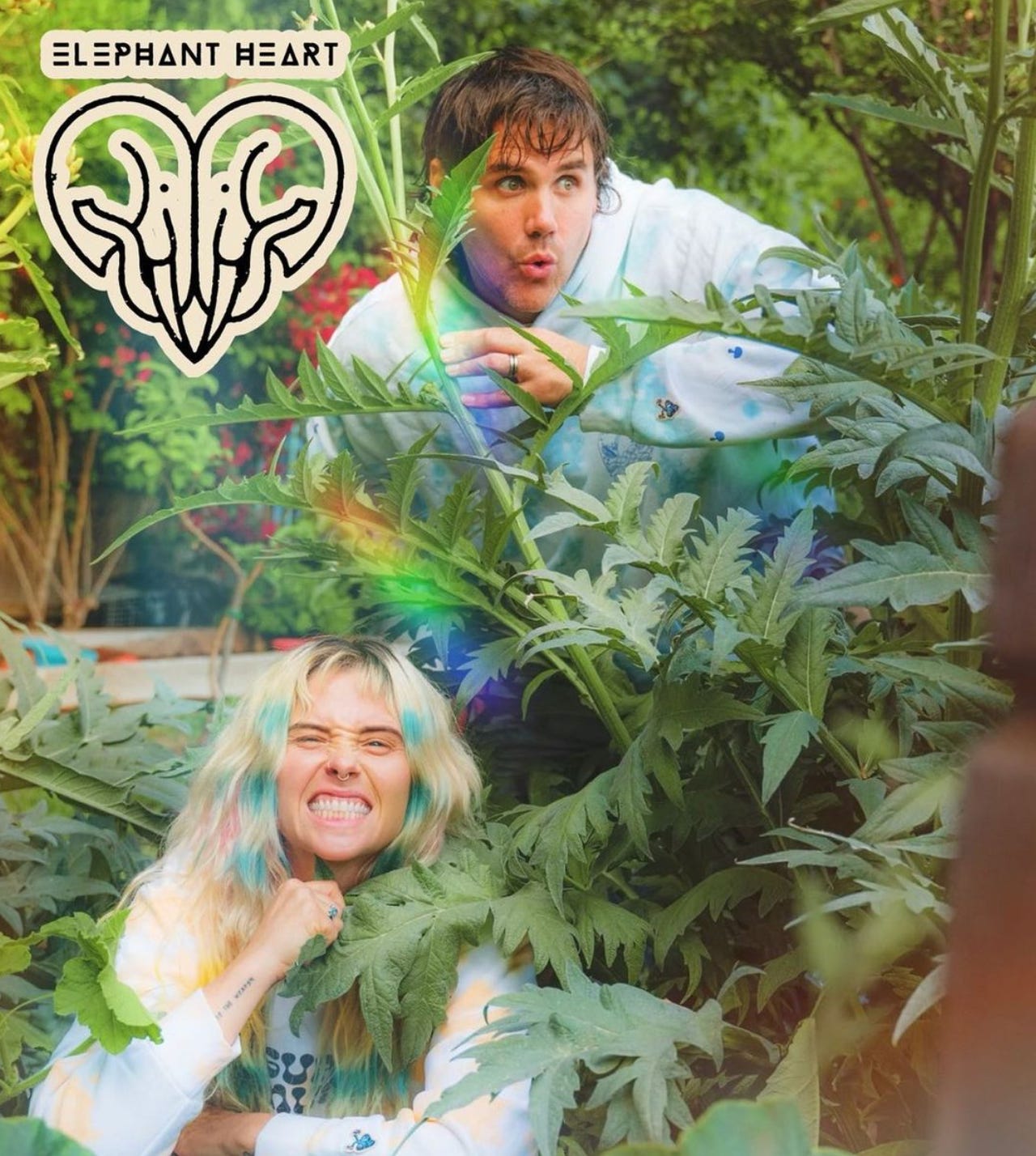
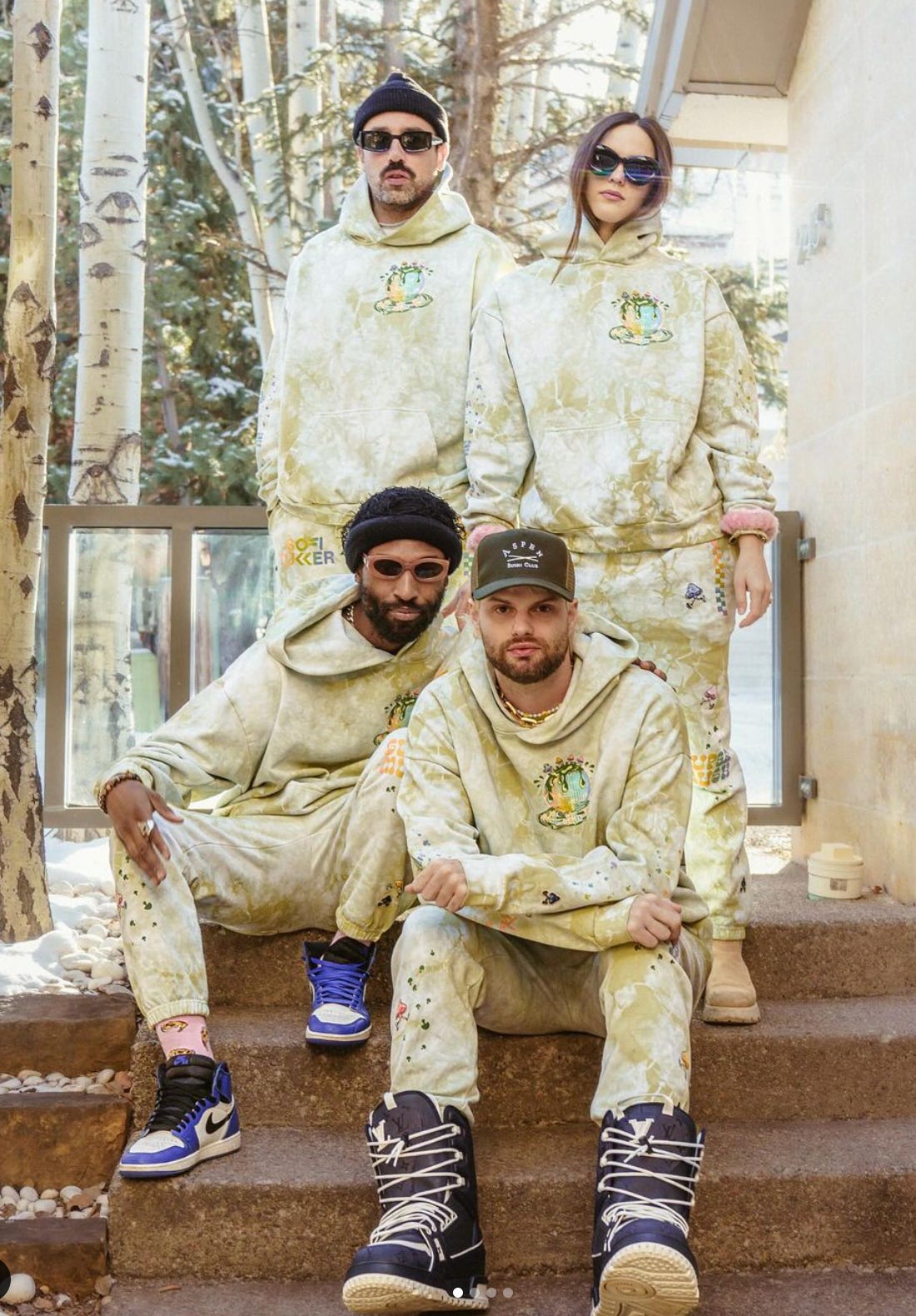
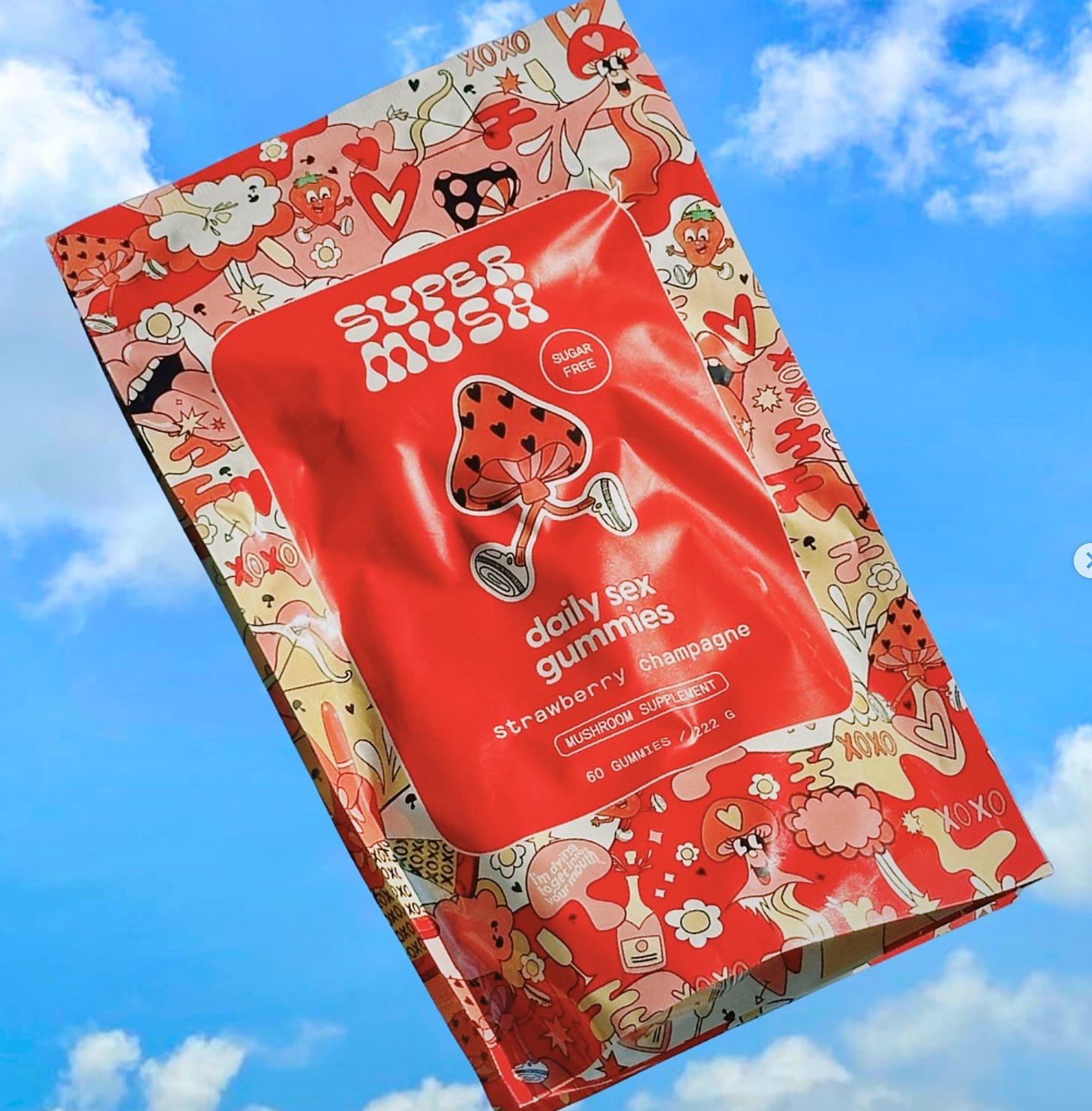
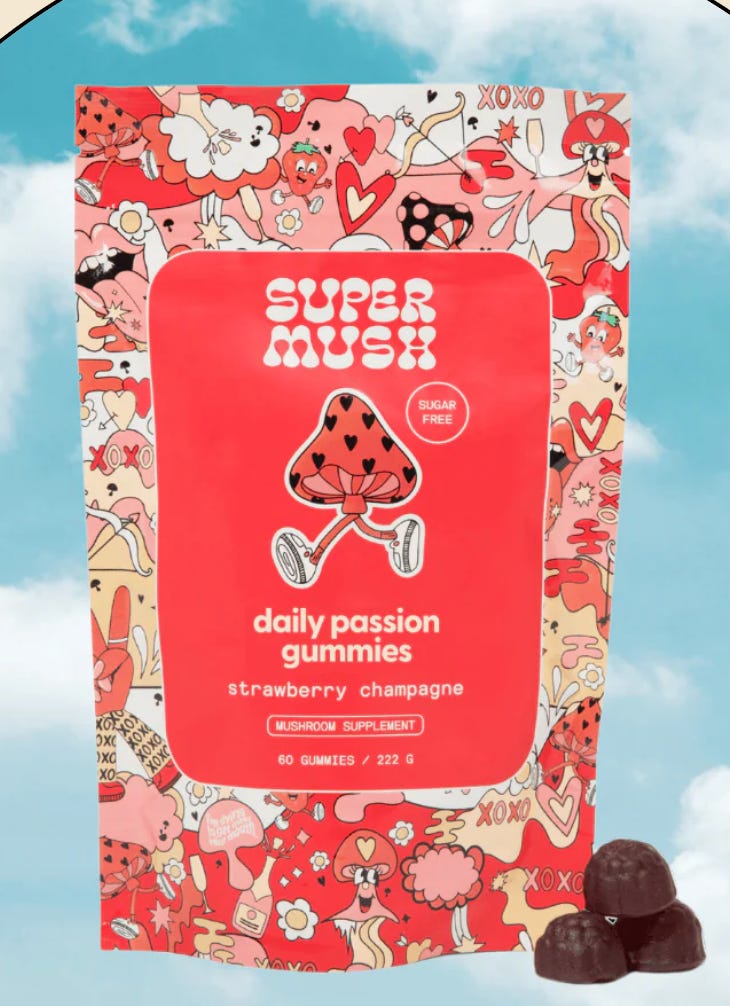
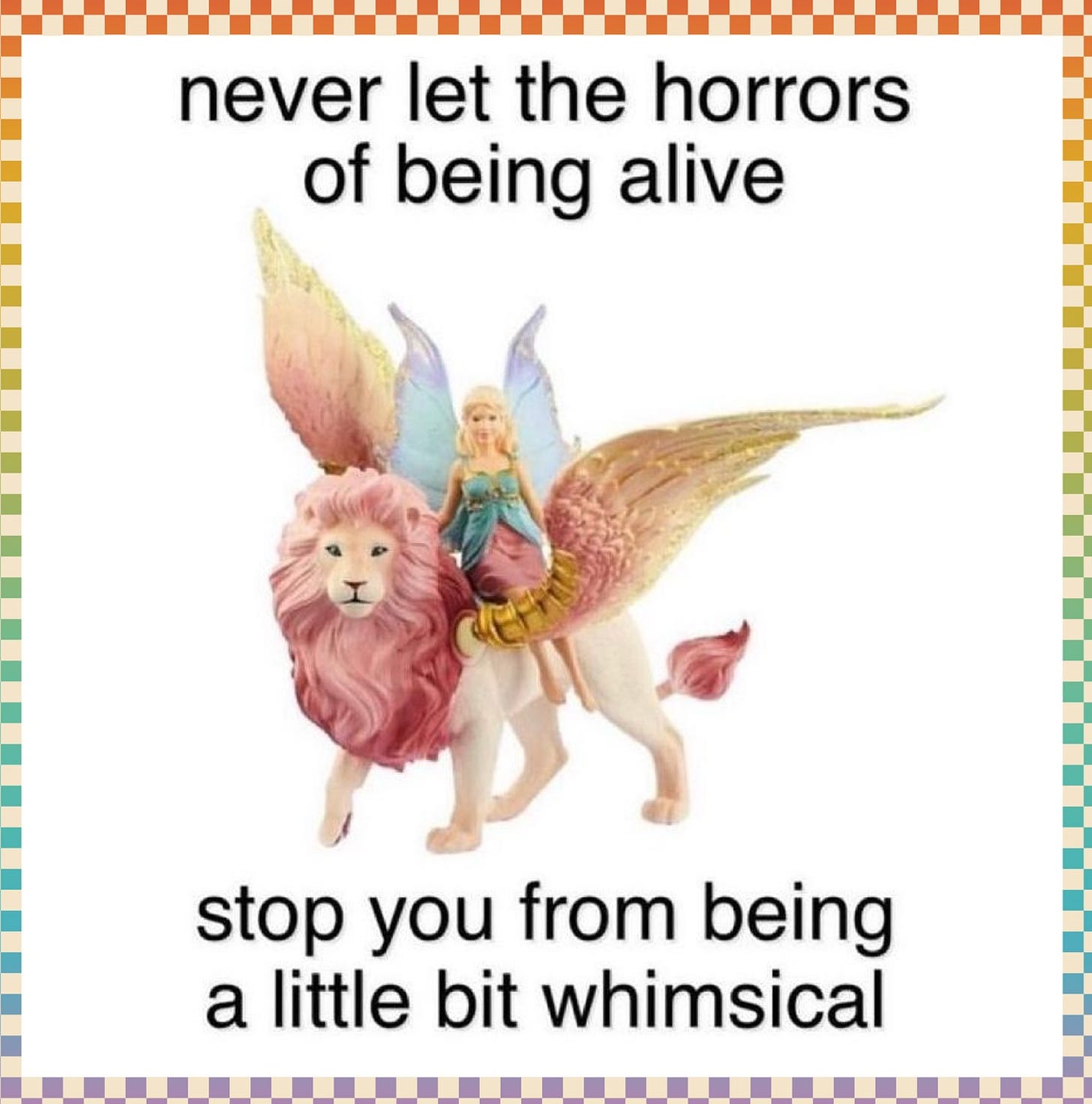
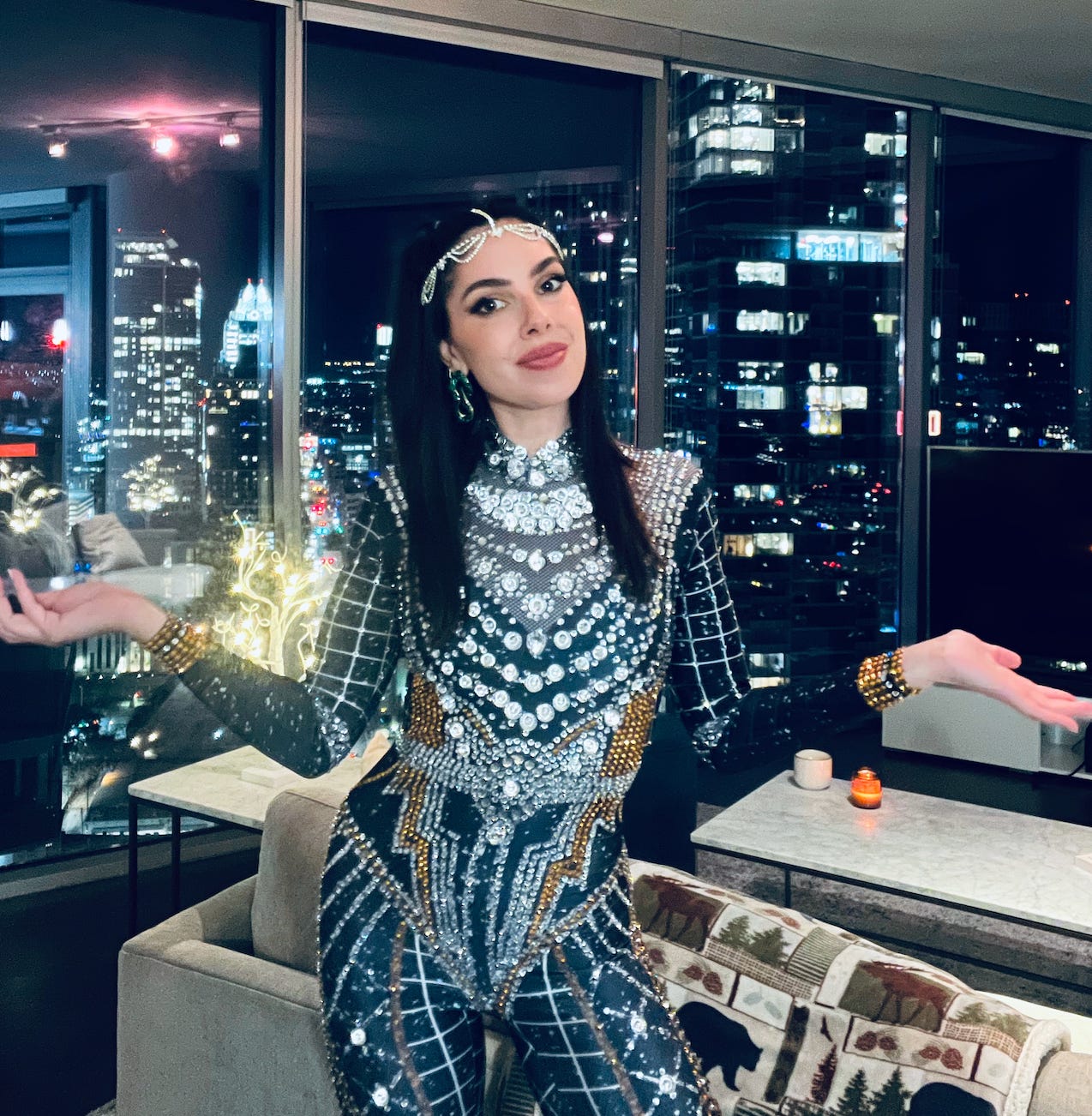
Such an incredibly written article. I’m actually shocked that Neon Hippies with its basic AF branding and seeming lack of proofreaders gets a contract at Neiman. Worse is the fact that brands which have true depth and expertise in the field of psychedelics don’t get the same traction as those that play the fake it till you make it game. Ultimately if you skirt the edges you don’t disrupt or threaten Big Pharma and I think that goes a long way. No shadow bans, no Shopify account closures, you just have to dumb yourself down to an empty vessel in the process.